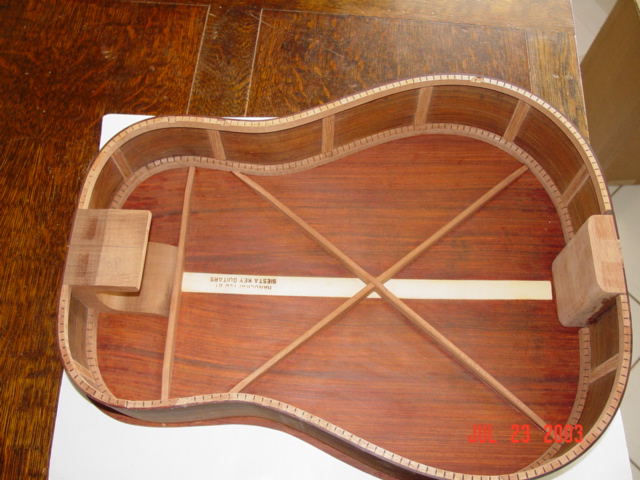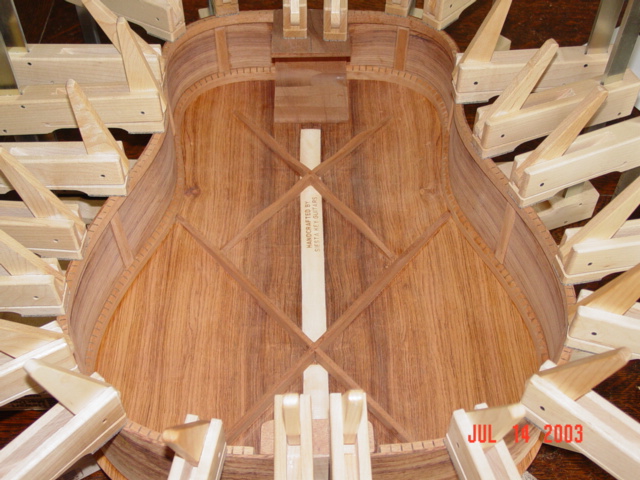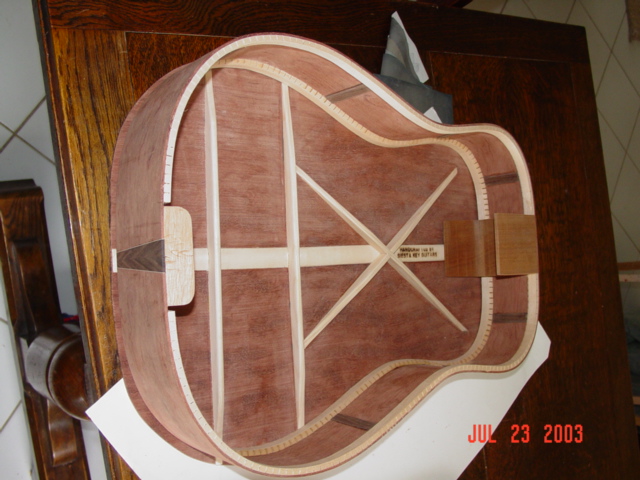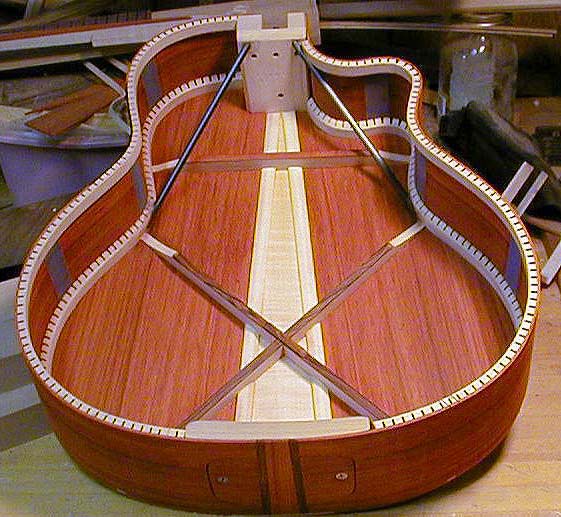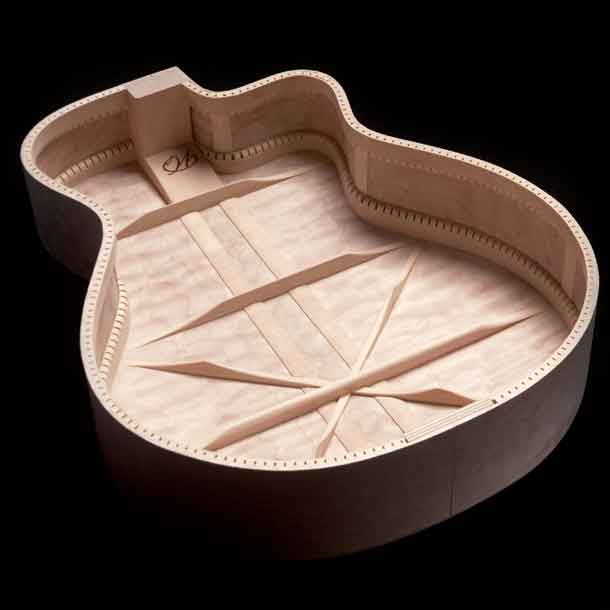[QUOTE=Shane Neifer] Hey Mark (and Dave W),
I am not up on the carbon fibre stuff. I am trying to see the beneifit of using the rods but it just escapes my simple mind. The whole guitar is somewhat of a torsion box, weak in each of it's elements but incredibly strong once put together. It seems, from the angles that the rods are positioned, that they are intended to distribute compression from the strings through the neck to spread that load over more of the guitar. But doesn't that huge glue surface area on the top of the head block, coupled with your top bracing pattern, offer enough resistance to that compressing force?
[/QUOTE]
Shane - I got the idea as well from Rick Turner, Howard Klepper and Mike Doolin (although he uses a composite wood/carbon fibre butress brace system). My take is "similarish" to Mark's. The pull of the strings is pulling the neck's heel away at the bottom and pushing it in at the top. Over time this torsion force can slightly flatten the back to front arch in the back and move the neck angle even though the "geometry" of the box doesn't seem to have changed. The rods are there to help combat this force - the top rods will be in compression and the bottom ones in tension. I use 2 to "balance" these forces and the bottom ones are there to stop the flattening of the back arch in particular. Mark's system with the anchor on the bottom and the rod attached to the top of the neck block works, I suppose, on the principle that if the top of the block doesn't move then neither will the bottom, but I suppose the top of the block could stay put and the bottom arch still flatten.Better safe than sorry is my motto.
In my system they are not there to "spread" the strings load - I tie the top bracing into the neck block with an A frame and haven't made the neck block any smaller. They are a long term "insurance" for almost zero extra weight. The flattening of the arch is a long term effect and the tension/compression forces on the rods is, I suspect, not huge. I guess this as on one guitar two rods weren't properly glued in to the tie blocks and I was easily able to take them out and reglue with the strings on the guitar - no huge pressure deforming there.
Rick Turner makes his neck blocks very slim and has very little bracing on the top upper bout - in his case the rods may be taking more of a pressure bearing/distribution role.
Reminds me of my favourite Groucho Marx quote "Time wounds all heels" - this is the builder's paranoia too and what this is insurance for. It's a bit like Elephant traps I suppose - if the neck stays put for 20 yars it's working (I see no elephants!!)
Mark - is that a Mike Doolin style adjustable neck I see in the neck block in your photo. Tell me more, I'm thinking of trying this system out.Dave White38614.8042013889
|



